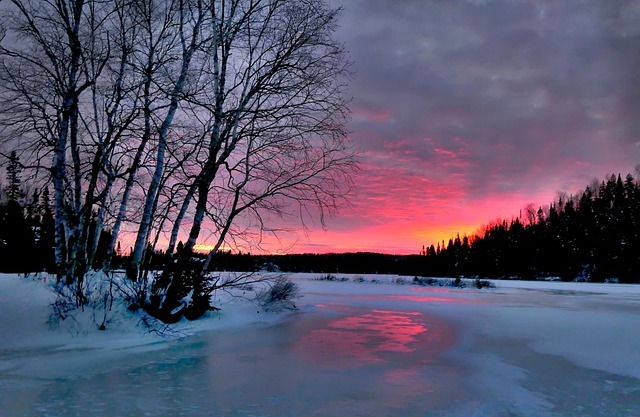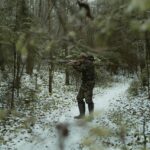Winter’s chill is both exhilarating and challenging. As the temperature drops, the risk of hypothermia looms, especially in cold environments where the body’s heat loss can outpace its production. In this comprehensive guide, we’ll delve into the intricacies of hypothermia, exploring effective prevention strategies and highlighting crucial treatments to keep you warm and safe.
What is Hypothermia?
Hypothermia occurs when the body loses heat faster than it can generate, resulting in a dangerously low core temperature. Prolonged exposure to cold weather, combined with wind and dampness, significantly increases the risk. Now, let’s break down the stages of hypothermia to understand its progression. As winter descends, the threat of hypothermia, marked by a dangerously low core body temperature, becomes more pronounced. This comprehensive guide explores the nuances of hypothermia, offering insights into its stages, symptoms, and preventive measures.
Temperature Thresholds and Categories
Hypothermia encompasses mild, moderate, and severe stages, each defined by specific temperature thresholds. Mild hypothermia ranges from 90-95°F, while severe hypothermia occurs when the body temperature drops below 82°F.
Risk Factors in Cold Environments
Cold, windy, and wet conditions elevate the risk of hypothermia. Understanding how these environmental factors contribute to heat loss is crucial for individuals navigating chilly landscapes.
Symptoms of Mild Hypothermia
In its early stages, hypothermia manifests through subtle signs such as shivering, cold skin, and mild confusion. Recognizing these symptoms is paramount for effective intervention.
Progression to Moderate Hypothermia
As hypothermia advances, shivering intensifies, coordination falters, and confusion deepens. Swift action is imperative during the moderate stage to prevent further deterioration.
Critical Signs of Severe Hypothermia
Severe hypothermia presents with the cessation of shivering, muscle rigidity, unconsciousness, weak pulse, and shallow breathing. Immediate medical attention becomes essential at this critical juncture.
Preventive Measures
Layering clothing serves as a fundamental preventive measure against hypothermia. The process involves wearing a moisture-wicking base layer, an insulating layer, and a windproof and waterproof outer layer.
Stay Dry, Stay Warm
Wet clothing accelerates heat loss, making staying dry a crucial aspect of hypothermia prevention. Investing in waterproof gear and carrying extra layers for changing significantly reduces the risk.
Hydration and Thermoregulation
Staying hydrated is paramount in cold environments. Dehydration hampers the body’s ability to regulate temperature, increasing susceptibility to hypothermia.
Emergency First Aid
Knowledge of building emergency shelters, starting safe fires, and utilizing body heat or group warmth is essential for providing effective first aid in hypothermic emergencies.
As winter tightens its grip, understanding hypothermia is the key to staying warm and safe. Armed with knowledge about its stages and preventive measures, individuals can confidently navigate cold terrains, ensuring a secure and enjoyable winter experience.
Stages of Hypothermia
1. Mild Hypothermia (Body Temperature: 90-95°F)
Subtle shivering, numbness, and mild confusion are telltale signs. Your body attempts to conserve heat by constricting blood vessels.
Recognizing Mild Hypothermia Symptoms
- Shivering
- Cold and pale skin
- Slurred speech
2. Moderate Hypothermia (Body Temperature: 82-90°F)
Shivering intensifies, coordination falters, and confusion deepens. At this stage, seeking warmth is crucial to prevent further deterioration.
Key Signs of Moderate Hypothermia
- Violent shivering
- Slowed breathing
- Weak pulse
3. Severe Hypothermia (Body Temperature: Below 82°F)
Shivering may cease, replaced by muscle rigidity. Unconsciousness, weak or absent pulse, and difficulty breathing characterize severe hypothermia, demanding immediate medical attention.
Critical Indicators of Severe Hypothermia
- Loss of consciousness
- Shallow or absent breathing
- Weak or non-existent pulse
Preventing the Chill
1. Layer Up
Just like an onion, layering clothing traps warm air close to the body, providing an effective barrier against the cold. Start with a moisture-wicking base layer, add an insulating layer, and top it off with a waterproof and windproof outer layer.
Layering Essentials
- Base layer (moisture-wicking)
- Insulating layer (thermal)
- Outer layer (windproof and waterproof)
2. Stay Dry, Stay Warm
Wet clothing accelerates heat loss. Invest in waterproof gear and pack extra layers to change into if you get wet. A dry body is a warm body.
3. Hydration
Staying hydrated is vital in cold environments. Dehydration impairs your body’s ability to regulate temperature, making you more susceptible to hypothermia.
Hydration Tips
- Drink warm fluids
- Avoid alcohol and caffeine
4. Keep Moving
Physical activity generates heat. Keep your blood flowing by incorporating gentle exercises, especially in extreme cold conditions.
Hypothermia First Aid
1. Shelter from the Storm
If you find yourself in a cold environment without proper gear, knowing how to construct an emergency shelter can be a lifesaver.
DIY Emergency Shelter Tips
- Use natural materials (branches, leaves)
- Create a barrier from wind and moisture
2. Heat Sources
Building a fire can be a game-changer in preventing hypothermia. Master the art of safe fire construction, ensuring warmth without unnecessary risks.
Fire-Building Basics
- Gather dry fuel
- Establish a safe perimeter
3. Body Heat
Huddling with others or using your own body heat can be a temporary solution in the absence of external heat sources.
Body Heat Strategies
- Share body heat in groups
- Insulate with blankets or clothing
Conclusion
In the vast landscape of cold environments, understanding hypothermia is the compass guiding your journey. From layering up to mastering the art of emergency shelters and harnessing the warmth of a well-built fire, you’re now equipped with the knowledge to brave the cold confidently. By prioritizing prevention and being mindful of the body’s signals, you can ensure a safe and enjoyable adventure in even the most frigid conditions.
Remember, knowledge is your greatest ally against the cold’s formidable grip. Stay warm, stay informed, and embrace the beauty of winter without succumbing to its icy challenges.







